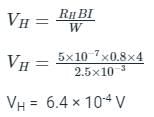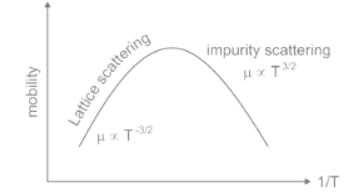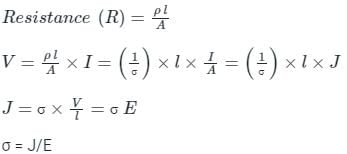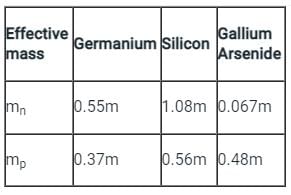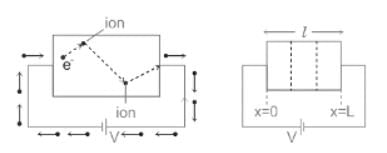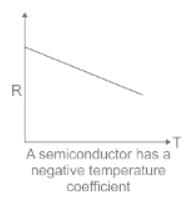Test: Carrier Transport - 2 - Electronics and Communication Engineering (ECE) MCQ
10 Questions MCQ Test - Test: Carrier Transport - 2
A Hall-effect element is used for the measurement of magnetic field of 0.8 Wb/m2. The thickness of the element is 2.5 mm and is of bismuth material. If the current passed through the element is 4A, then the Hall emf developed will be: (Hall coefficient is 5 × 10-7)
A bar of silicon is doped with a boron concentration of 1016 cm-3 and assumed to be fully ionized. It is exposed to light such that electron-hole pairs are generated throughout the volume of the bar at the rate of 1020 cm-3s-1. If the recombination lifetime is 100 μs, the intrinsic carrier concentration of silicon is 1010 cm-3 and assuming 100% ionization of boron, then the approximate product of steady-state electron and hole concentrations due to this light exposure is
A semiconductor bar having a length of 4 cm is subjected to a voltage of 8 Volts. If the average drift velocity is 104 cm/s, then electron mobility would be:
If σ is the conductivity, What is the relation between the electric field E and the current density J in a conducting medium?
The Hall Effect may be used to
1. Determine whether the semiconductor is p-type or n - type.
2. Determine the carrier concentration.
3. Calculate the mobilty.
Which of the above statements are correct?
At T = 300 K, the hole mobility of a semiconductor μp = 500 cm2/V-s and kT/q = 26mV. The hole diffusion constant Dp in cm2/s is _______




